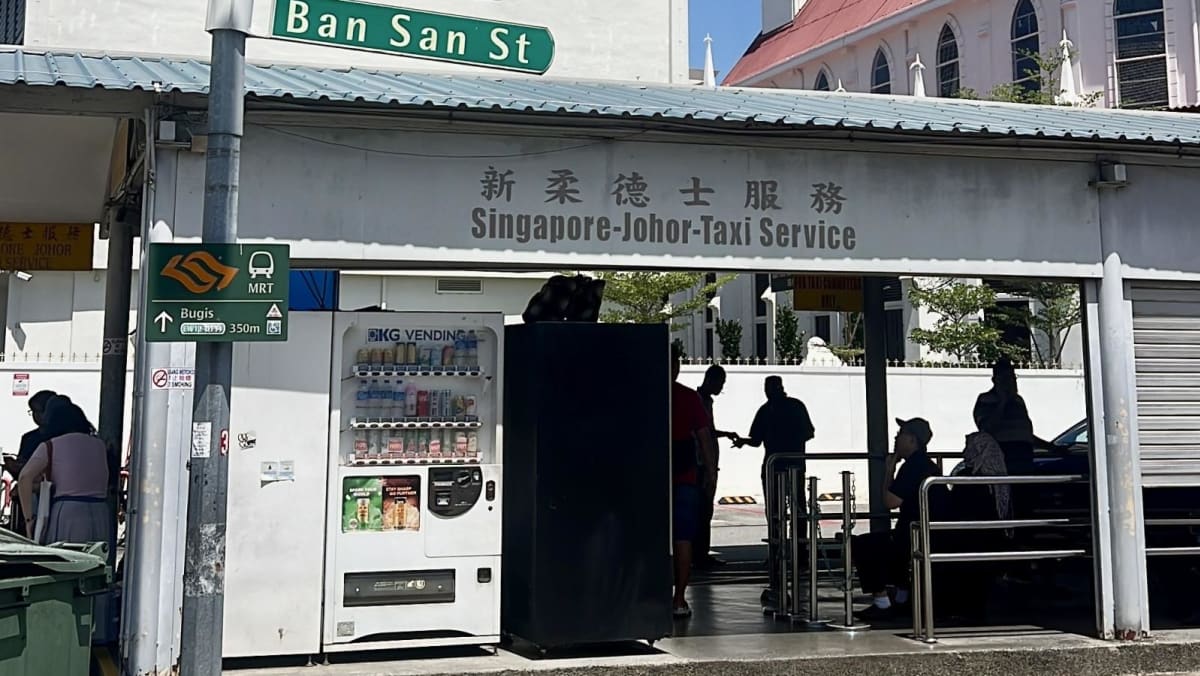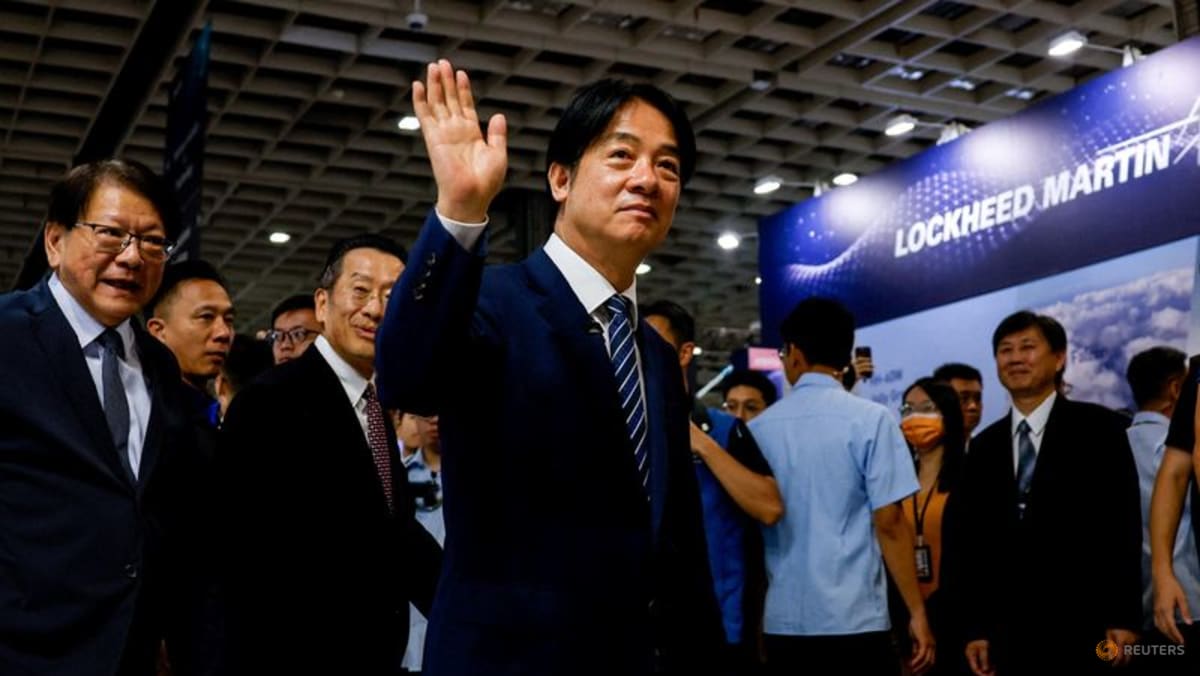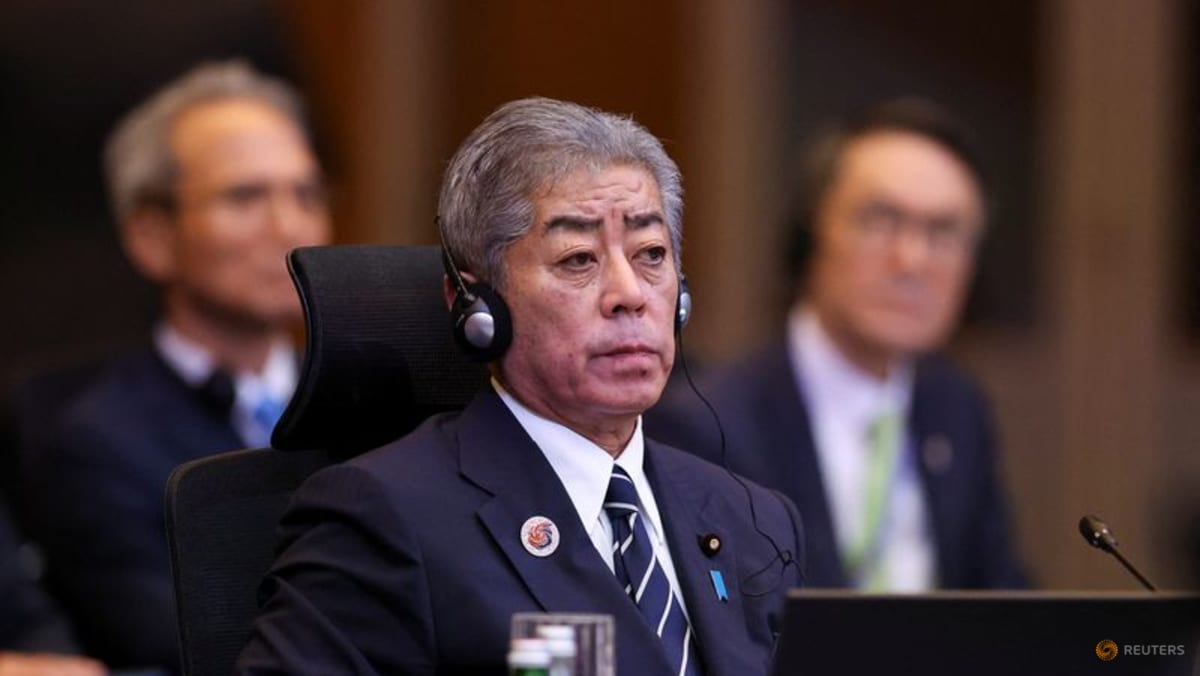SINGAPORE/JOHOR BAHRU: It is 2pm on a weekday at Ban San Street Terminal in Singapore, where licensed taxi drivers are authorised to pick up passengers headed across the border to Johor Bahru.
A dozen or so people can be seen waiting idly in the sheltered terminal – but no one is there to board a taxi.
“There are only drivers here and no passengers,” said Mr Haniff Mahbob, 73, who has been a taxi driver for over 40 years. “That is how bad the situation has become.”
Over at Larkin Sentral Terminal in Johor Bahru, licensed Malaysian taxi drivers are also facing similar struggles. Business is somewhat better on weekends, though not by much.
“Sometimes, I would come at about 3am but would only get my first passenger at 7.30am,” 59-year-old Roslan Mahmod told CNA.
Since the reopening of borders after the COVID-19 pandemic, the drivers have faced intense competition from illegal cross-border operators who offer to pick up passengers from their doorstep and drop them off at their intended destinations.
“It’s over already,” said Mr Haniff, who added that there used to be long queues of passengers before the pandemic.
“Will it ever come back to the same glorious (days) as before? I doubt so, unless something drastic is done about what is going on in the industry.”
Under the cross-border taxi scheme, up to 400 taxis from Singapore and Malaysia are licensed to pick up and drop off passengers only at a single designated point in the other’s country – Larkin Sentral in Johor Bahru for Singapore taxis and Ban San Street Terminal in Singapore for Malaysian taxis.
The scheme is underutilised, said Singapore’s Land Transport Authority (LTA) on Sunday (Aug 3). There are approximately 300 licensed cross-border taxi drivers across Singapore and Malaysia in total.
To join the scheme, LTA requires Malaysia-registered taxis to obtain a public service vehicle licence and a permit, while Singapore-registered taxis will need a permit from Malaysia’s Land Public Transport Agency (Agensi Pengangkutan Awam Darat).
Foreign-registered private vehicles are not allowed to provide chauffeured cross-border services as they are not appropriately licensed or insured, LTA said.
Despite this, illegal operators have been eating into the earnings of the licensed taxi drivers, with some of these operators brazenly poaching passengers near the two pick-up points in Singapore and Johor Bahru.
In recent weeks, LTA has been carrying out patrols at Gardens by the Bay and Changi Airport, as well as working with the Immigration and Checkpoints Authority (ICA) at a land checkpoint to clamp down on these illegal services. A total of 19 drivers were caught, and all their vehicles were impounded, LTA said on Aug 6.
Meanwhile, LTA is mulling solutions such as the use of ride-hailing apps to book cross-border trips on licensed taxis, as well as to increase the number of boarding and alighting points in Singapore and Malaysia.
The authority also clarified that there are no plans to fully liberalise cross-border transport via ride-hailing services, in response to recent Malaysian media reports suggesting that Singapore intends to do so.
LOW DEMAND FOR LICENSED CABS
There is no shortage of travellers crossing the Singapore-Malaysia border daily, with a record number of more than 578,000 crossings made on Jun 20 this year, ICA said on Aug 5.
To this end, LTA said it is seeking to encourage the full take-up of the quota of licensed taxis, given the growing commuter demand for more convenient cross-border travel.
Of the nine taxi drivers that CNA spoke to, some said that commuters are not opting for licensed services when they want cross-border transport, and as such, there is no point in increasing the number of drivers available.
Due to the low demand for their services, licensed taxi drivers in both cities often have to wait long hours for a single fare.
When CNA visited Ban San Street Terminal on two consecutive weekdays, a few Malaysian taxi drivers who had been waiting for passengers on Tuesday were seen at the same spot on Wednesday. They said they slept in their taxis because there were no passengers to pick up.
Prior to Singapore’s recent clamp down, unlicensed cross-border operators would frequently park near the terminal and lure customers away, said Mr Mohamed Yazid, 57, who started working as a taxi driver in Singapore in April.
He added that this situation is unfair to licensed taxi drivers, who are subject to regulatory oversight from authorities in both countries.
“Is it fair for me? Not fair. But they are stealing my passengers, my livelihood,” said Mr Mohamed.
Associate Professor Walter Theseira, a transport economist from the Singapore University of Social Sciences, said that these licensed cross-border taxis are not providing consumers the service they want.
Cross-border taxis are only allowed to pick up or drop off passengers at a designated point when outside of their home country. A one-way trip costs S$60 (US$47) per car, or S$15 per passenger.
However, they may pick up and drop off passengers anywhere within their home country – subject to additional fees. For example, a Singapore-registered taxi can only pick up and drop off passengers at Larkin Sentral in Malaysia, but can pick up passengers from anywhere in Singapore, apart from Seletar and Changi Airport, for S$80.
LTA said the reason for this arrangement is to ensure that foreign taxis do not ply the roads illegally to provide point-to-point services outside their home country.













